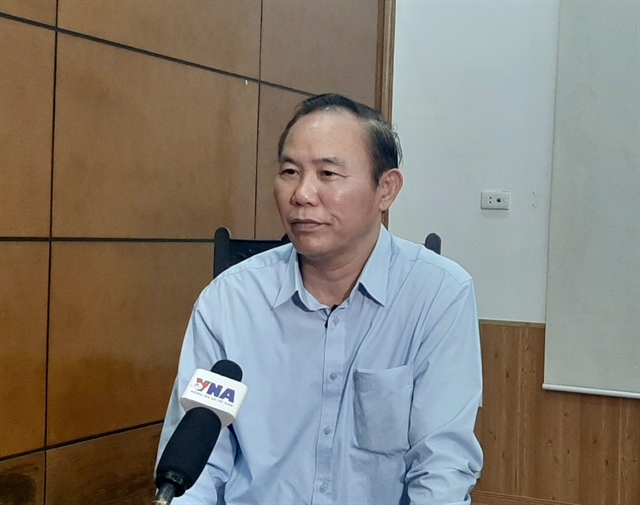 Opinion
Opinion

 |
| Deputy Minister of Agriculture and Environment Phùng Đức Tiến. — VNS Photo Trần Như |
Deputy Minister of Agriculture and Environment Phùng Đức Tiến spoke with a Việt Nam News reporter Trần Như about Việt Nam’s latest push to lift the European Commission’s yellow card on illegal, unreported and unregulated (IUU) fishing. He discussed progress since 2017, ongoing challenges and the expectations for the next EC inspection.
How would you describe Việt Nam’s progress in meeting the EC’s recommendations so far?
Since the EC issued the yellow card in October 2017, Việt Nam has rolled out a series of measures, from tightening the legal framework to overhauling fleet management and upgrading traceability systems. The yellow card has not yet been lifted, but the changes made in recent years are substantial and, more importantly, structural.
Our legal system has been updated with 11 new circulars and two decrees to bring regulations in line with on-the-ground realities.
High-level political direction has also been crucial. After earlier guidance from the Secretariat, the Party issued Directive 32 in April 2024 to reinforce national leadership over IUU prevention and sustainable fisheries.
The Government followed up with its own resolution, and the Supreme People’s Court issued guidance on applying criminal penalties for illegal fishing and trading. Together, they form a coherent legal framework that supports enforcement and compliance.
One major shift is the Prime Minister’s direct oversight, including what he has called a ‘declaration of war’ against IUU violations.
Fleet management has tightened significantly. Data from VNFishbase, the police and the military are now fully aligned, covering 79,360 registered vessels. Of these, more than 7,000 boats of 15 metres or more and over 4,000 of 24 metres or more are under strict monitoring.
Local authorities have been instructed to prevent unqualified vessels from going to sea, with weekly supervision reports sent to the Government. The backlog of administrative violations has been largely cleared, with only 0.33 per cent yet to be finalised.
Nearly all vessels required to use vessel monitoring systems (VMS) have now installed them, except for those no longer operating or in transfer. VMS data tracks boats from departure to landing, improving transparency and reducing the risk of violations in foreign waters.
Localities have also completed vessel registration, licensing and inspections, effectively ending the long-standing ‘three-no’ fleet. Digitalisation, including electronic logbooks, VNeID vessel identification and fleet data synchronisation, is being expanded nationwide.
For traceability, electronic logbooks and digital systems are in place at designated ports and processing plants. The entire chain, from catch certificates at port to export certificates, is tightly controlled. These steps reflect a shift across all levels of government and help demonstrate to the EC that Việt Nam is building a transparent, accountable and sustainable fisheries management system.
Given this progress, how confident are you that Việt Nam can have the yellow card lifted? Is the country ready for the EC’s next inspection?
We have submitted additional reports to the Government and prepared detailed working scenarios for the EC inspection team. Based on the results so far, Việt Nam is ready – proactive, transparent and fully prepared to engage.
Over the years, IUU prevention has been a priority for the Government, ministries and localities. Communication campaigns, legal training and outreach to fishermen and businesses have been consistent. We also work closely with international organisations to adopt modern management practices that align with EU standards.
The EC has acknowledged Việt Nam’s efforts, especially improvements in traceability and vessel control. But lifting the yellow card requires maintaining these results without backsliding. With coordinated action and sustained political will, we believe Việt Nam can achieve the goal of removing the IUU warning within a reasonable timeframe and build a fisheries sector that is sustainable and competitive internationally.
What message do you have for coastal provinces and frontline officials during this final stage?
Local responsibility is decisive. The Government aims to have the yellow card lifted in 2025, but this depends heavily on enforcement at the grassroots level – the places that directly manage vessels, crews and day-to-day fishing activity.
Directive 32 makes clear that combating IUU fishing is an urgent and long-term task. Local leaders must take full state-management responsibilities, enforce the law strictly and avoid leniency or avoidance.
The EC’s warnings are unambiguous. If violations in foreign waters and IUU practices persist, seafood exports to Europe will continue to suffer. Việt Nam’s long coastline and large fishing grounds present challenges, but these cannot be excuses for weak oversight. Only when VMS tampering ends and neighbouring countries stop reporting Vietnamese vessels trespassing, will the country be in a position to meet EC expectations.
Removing the yellow card is not just an export issue. It reflects Việt Nam’s commitment to protecting marine resources, safeguarding maritime sovereignty and improving the long-term livelihoods of fishermen. It also supports a strategic shift towards more aquaculture, more processing near shore and less reliance on risky offshore capture.
With strong political determination, coordination across local governments and the engagement of fishing communities, we believe Việt Nam can meet the 2025 target and present itself as a transparent and responsible partner in global sustainable fisheries. — VNS




